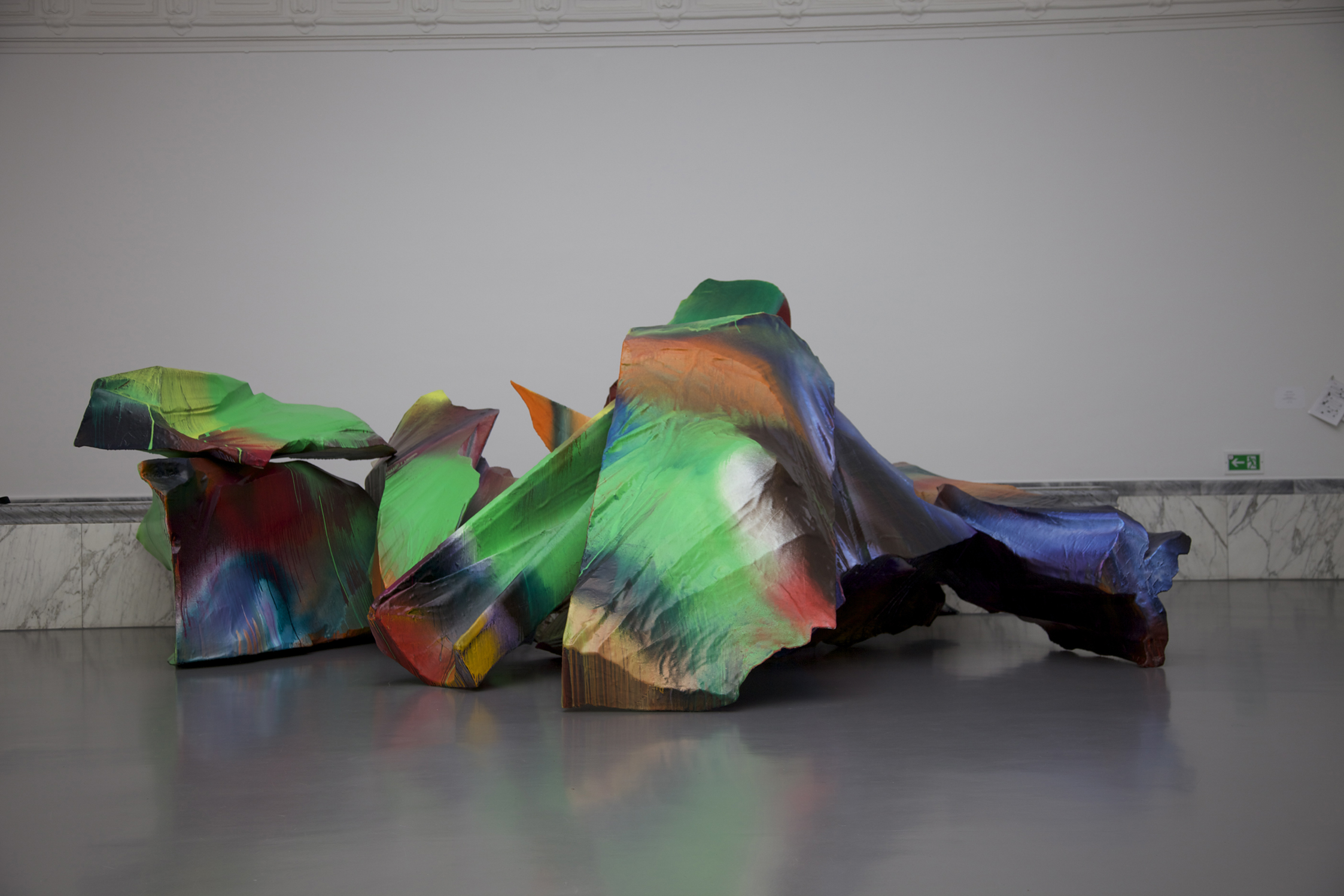Grosse, Katharine

Born 1961 in Freiburg, Germany, lives in Berlin
The largest pictures to be produced in recent times are being created by Katherine Grosse, an artist who works in this traditionally male-dominated realm with admirable self-conviction. Grosse began in the 1980s with figurative painting, and eventually switched to abstract painting, and finally in 1998, exchanged her brush for a spray gun compressor, which she uses to transform everything that crosses her path into paintings of course. Accordingly, paintings are not only created from the walls, floors, columns, windows, doors, ceiling, or staircases of art galleries, but also the bedrooms of art collectors, gyms, canteens, libraries, and open-air spaces.
Dressed in overalls with a helmet and protective glasses, Grosse spews clouds of brilliant colours from her loaded pistol that spread throughout the space and settle on flat, curved, and twisty surfaces, on objects, and occasionally even on framed canvases, simply on anything that her pistol is aimed at. Grosse’s paintings achieve a completely original, ephemeral appearance; the colours swirl about and cover the surfaces, and the shapes seem to spread throughout the space like levitating clouds. In such a way, the resulting images do not have a beginning or an end, not to mention a middle, an edge, or upper and lower borders—everything seems to be endless, timeless, changeable. And when the shapes continue to spread, they are without any constraints whatsoever. It is painting in its purest form, even though Grosse some- times applies objects made of polystyrene resembling stones that she piles together into impressive three-dimensional clusters.
Aggressiveness and even audacity link Grosse to street graffiti, which she uses to ruthlessly leave traces of colour on everything in her path. But what makes her stand out is her insistence on the pure nature of painting. What she is concerned with is not content or semantic references, but pure, unadulterated painting that becomes spatial, and therefore also real. It is possible to enter such a painting. And this puts unusual demands on audiences. They are no longer faced with a painting where perception can be controlled. They are now surrounded by a radiating blur of dancing colours that intermingle in space and time. Space and time enter simultaneously into their consciousness, without any control, hierarchy or assessment. Thus the audience is absorbed by an intense experience that is unique in contemporary art and that allows it to understand painting in an entirely new way, in relation to space and time.
